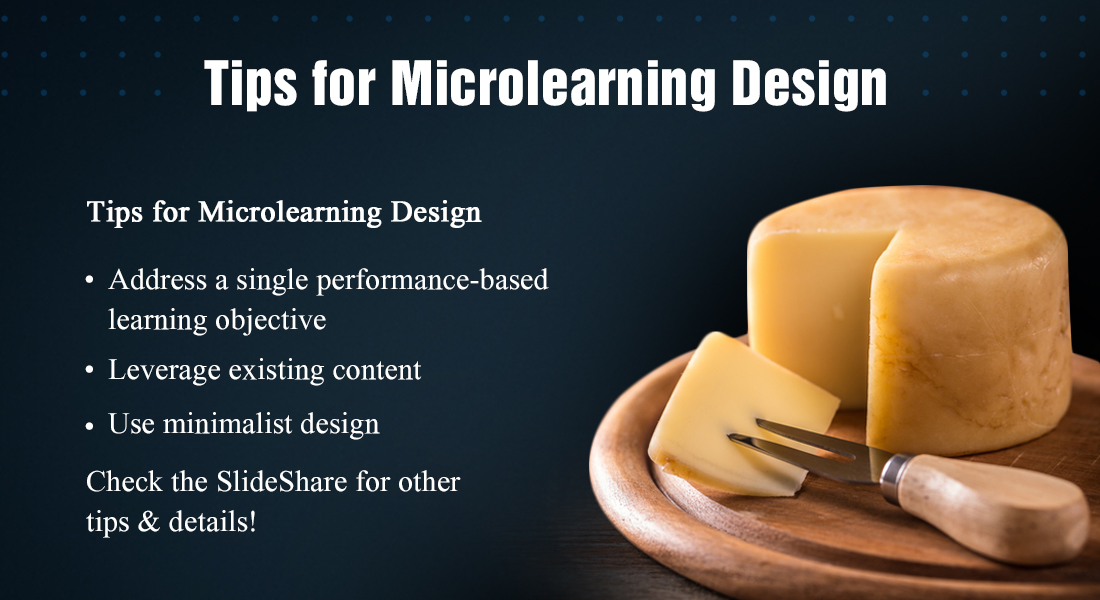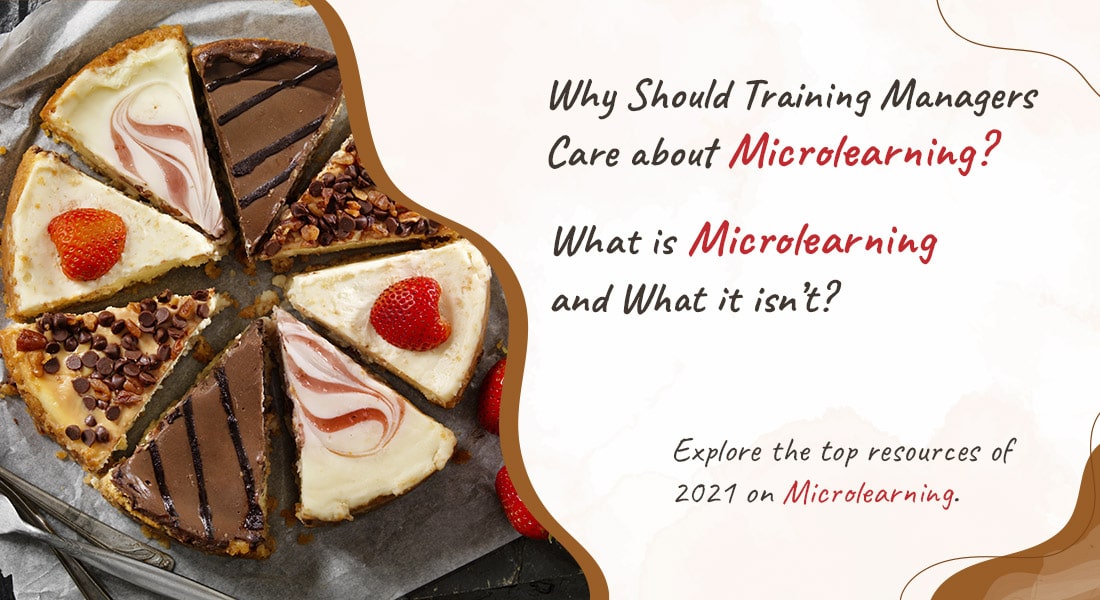Designing and Developing High Impact Microlearning
Know the factors you should consider to get microlearning design right and how you can design an effective microlearning asset.

How do you decide if microlearning will suit your training needs? For this, you will have to look into the organizational results you wish to achieve. If you want your employees to master specific skills or tasks, microlearning can help. These brief modules prepare employees for performing precise tasks and improve their productivity. However, selecting microlearning is just the first step – microlearning design has to be right for the right results.
How to get microlearning design right?
- Know your organizational results
- Select appropriate learning objectives
- Decide on the right instructional strategy
If you are looking for training that is varied and effective, microlearning design can be leveraged to develop a variety of digital formats – infographics, quizzes, videos, podcasts and more, and focus on specific objectives. How do you decide which part of your training is best suited for microlearning?
The frequency, importance, difficulty of learning, and the risk factors related to the task determine whether it can be taught through microlearning. For instance, if the frequency of performing a task is low and not very risky, microlearning can provide just-in-time support.
However, for the assets to have the desired impact, effective microlearning design is very crucial.
What Goes into Microlearning Design?
Know the desired organizational results
This will help establish an alignment throughout the design, development, and delivery process to ensure microlearning adds value. The desired organizational results are translated into the desired performance (what people have to be able to do to achieve the results). Once you list the performance expectations you have from your employees, zero in on the desired performance objectives.
Select an associated performance-based objective
Of course, for microlearning design to be effective, it’s also important to consider the conditions under which the performance must take place such as the environment and available tools and resources, the criteria for performance and appropriate instructional strategies. All this put together determines the form or shape of the microlearning asset.
Follow a streamlined development path
This in turn will help you decide the appropriate instructional strategy to ensure microlearning design is on the right track. The instructional strategy must consider the following factors:
- Target audience – the identity of your audience, their capabilities, their existing knowledge and their access to devices they may use for microlearning.
- Type of content associated with your objective – the different types of content include facts, concepts, principles, procedures, and processes. Based on the content, you will haveto follow a suitable instructional procedure.
- Instructional activities – you will have to decide on the instructional activities, suitable to microlearning that will help you deliver knowledge to your audience.
- Form (or type) of microlearning – the form or type will depend on the intended purpose, what you are trying to do for your learners. If for example, you have to demonstrate the steps of a process, you can use a video; whereas you can use an infographic to display a set of dos and don’ts.
- Learning analytics – the data available after measuring and monitoring your learners will help you improve the existing microlearning solution or decide on another solution, as needed.
These insights will help with microlearning design, which is instructionally sound and engaging, while following a streamlined production path. When microlearning is presented in a format that is easy to use and understand, it meets the needs of both companies and employees. When designed properly, it becomes a tool in the hands of employees that helps them address the challenges and tasks they face as part of their work.





